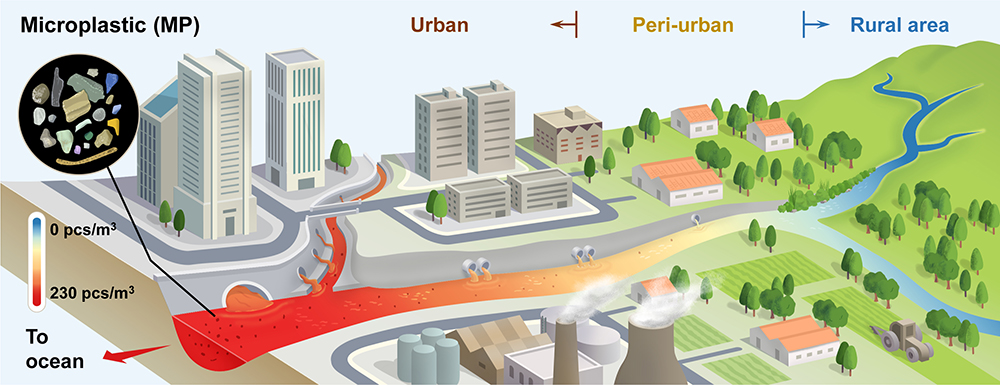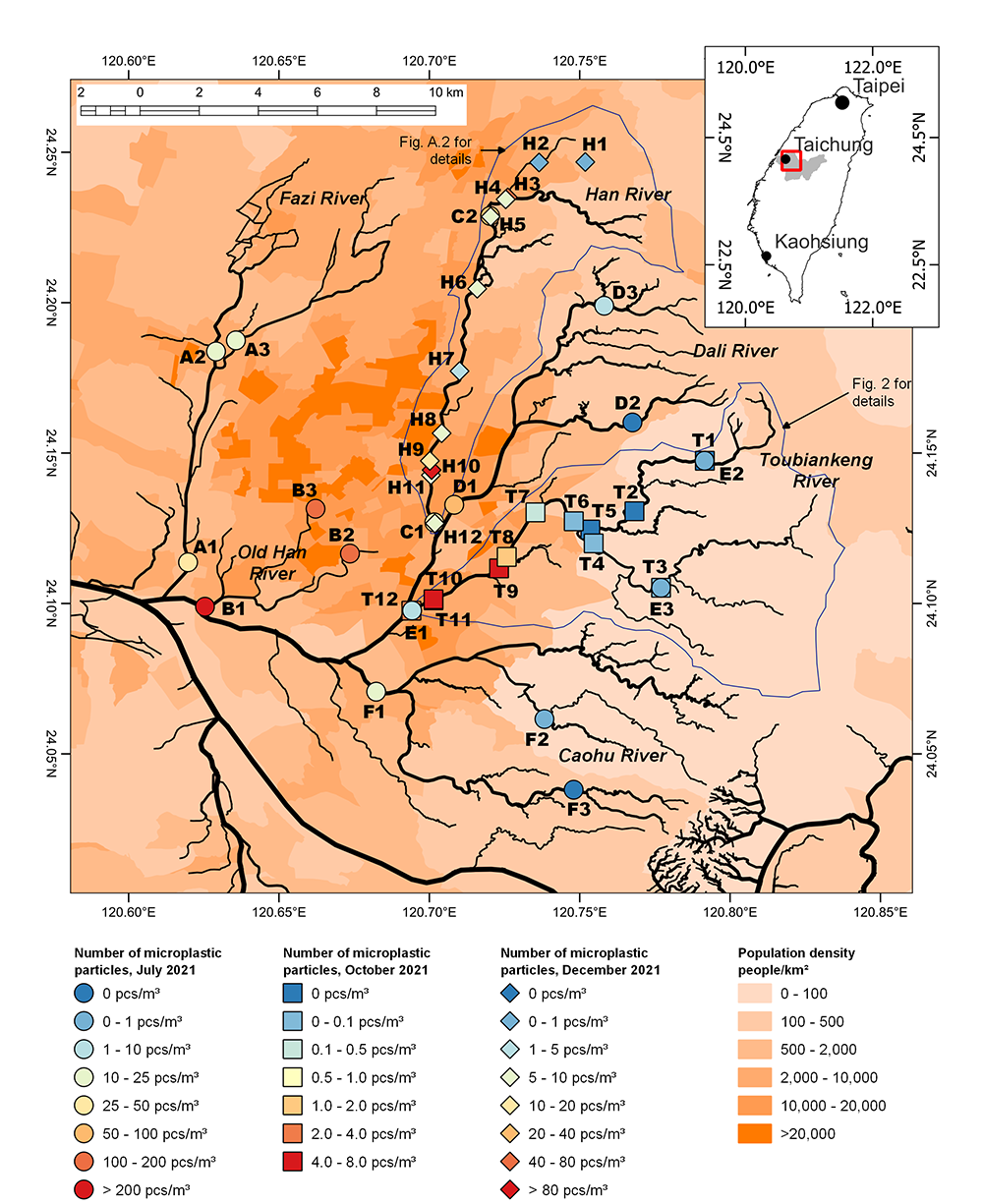


圖 1:台中市微塑膠污染示意圖。在農村地區,微塑膠含量極少或幾乎不存在。然而,當雨水下水道首次出現在農村向城市的過渡地帶時,微塑膠數量驟增。在城市中心,微塑膠濃度最高的地點通常位於雨水下水道出口或河流匯流處。
微塑膠廣泛存在,影響所有環境,包括河流。近年來,有關河流中微塑膠的研究數量大幅增加。然而,關於微塑膠的來源、遷移途徑及土地利用模式所扮演的角色,仍存在許多未解之謎。
本研究探討了微塑膠豐度與人為因素(如人口密度、都市化程度、土地利用類型)之間的關係,並分析了雨水下水道作為微塑膠遷移途徑的潛在作用。研究範圍涵蓋台灣中部台中市烏溪的支流,並對大里溪流域中的兩條子流域進行了更詳細的調查,以探討土地利用對微塑膠豐度的影響,特別是在城市與鄉村交界地帶,觀察微塑膠豐度如何隨著環境從農村向城市過渡而變化。
本研究在都市與鄉村地區的 41 個不同採樣點使用網目大小為 0.3 毫米的鬼蝠魟網(manta net)進行採樣。研究結果顯示,微塑膠豐度在無人居住的農村地區為 0 顆/立方公尺,而在人口稠密的城市中心可達 230 顆/立方公尺,並與人口密度呈現正相關。值得注意的是,研究發現,在農村與城市過渡區域,微塑膠豐度急劇上升,這一現象與雨水下水道的出現相吻合。
土地利用分析顯示,微塑膠豐度與流域內的工業區、住宅區及交通用地面積呈正相關,而與森林面積呈負相關。研究結果表明,流域內的住宅區與商業區可能是微塑膠的主要來源。
此外,本研究結果顯示,微塑膠豐度與人口密度或土地利用模式在都市-農村梯度上的相關性並非絕對確定。相關性的強度可能受到當地因素的影響,或取決於都市-農村梯度的發展程度。因此,缺乏相關性時需謹慎解讀,因為現有的相關性可能會受到上述因素的影響而被掩蓋。
關鍵概念
更多相關資訊

圖 2:研究區域概述。此圖展示了台中市(台灣中部)的人口密度、所有採樣點的位置及微塑膠豐度。以下地點在不同調查時期進行了兩次採樣:C1 和 H12,C2 和 H5,E1 和 T12,E2 和 T1,E3 和 T3。請注意,不同月份的數據範圍有所不同,無法直接比較。然而,每次採樣結果均顯示城市地區的微塑膠豐度較高。